QCF: BioMutant
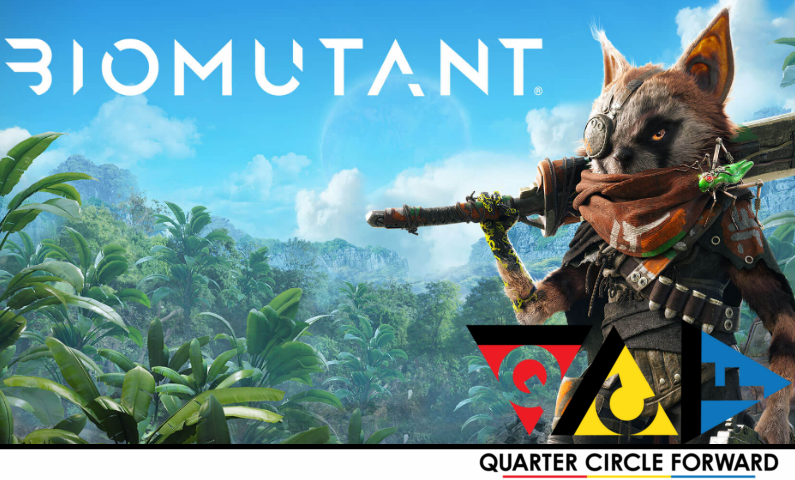
 he last decade of gaming has been a veritable smorgasbord of titles to choose from, with a steadily growing hustle of developers working hard to release their big AAA software, and players scrambling to play them. An unfortunate side-effect of that never-ending hamster wheel of cycle is that with so many options, some games are just doomed to be overlooked, and sometimes at no fault of their own either.
he last decade of gaming has been a veritable smorgasbord of titles to choose from, with a steadily growing hustle of developers working hard to release their big AAA software, and players scrambling to play them. An unfortunate side-effect of that never-ending hamster wheel of cycle is that with so many options, some games are just doomed to be overlooked, and sometimes at no fault of their own either.
Which brings us to Experiment 101’s debut release, BioMutant; a quirky Open-World Action-Adventure title that tries to do way too many things at once in hopes of appealing to a broader base of players. The premise of its Post-Apocalyptic Kung Fu critter tale is certainly one of the more unique games of its kind, sure, but unfortunately, the exotic blend of Fallout meets Planet of the Apes meets Enter the Dragon makes for a bloated melting pot that fails to deliver a consistent flavor in its own right.
There’s a lot to unpack here gameplay-wise, and I’m going to do my damnedest to cover all of the density of the systems at work, but first, I would be remiss to not touch on the technical performance of the game because it’s what hurts this ambitious game the most.
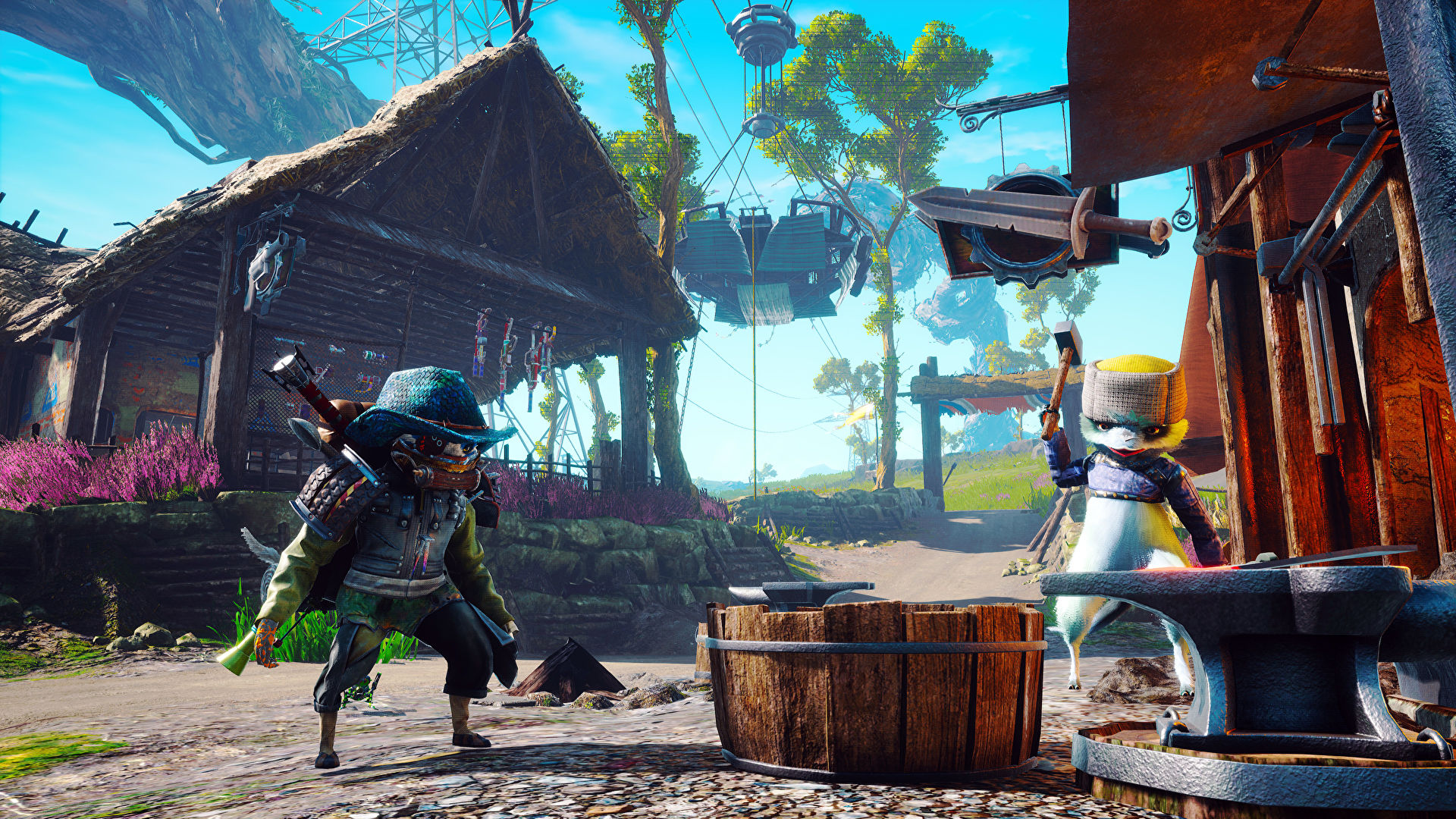
I want to preface this critique that I am in no way, shape, or form, a framerate snob—games don’t have to be 60 FPS to be enjoyable. I will, however, set the record that wildly inconsistent framerates are the absolute worst, and BioMutant is certainly wild in that respect—like Jail-broken Microsoft PowerPoint 2013 wild. Regardless of how intensive the action may be on screen, the adventure can rendered into a stuttering standstill without a moment’s notice, creating for a disorienting experience. It is just the frame rate either; textures will pop in and out, enemy characters will clip through the environmental set pieces or buildings, and rarely, completely lock up, freezing the game up altogether. While the graphical hitches aren’t as frequent, I honestly can’t count how many times the framerate has faltered in every play session I’ve had with BioMutant, and it’s just maddening. At first, I thought the game wasn’t properly optimized for my PS4 Pro, but as I spoke to fellow PPR contributor Andrew on the subject, he reassured me that the issue persisted on the PS5 version of the game as well. There’s honestly no excuse for it because, at the end of the day, a game that consistently running at 30 FPS is far better than a game that wildly fluctuates between 20-60 FPS.
Technical hiccups notwithstanding, the THQ open-world title isn’t all bad—when the ideas actually flow anyway.
Let’s look at the premise—I want to expand on that quick allegory I made earlier to drive my point across. Nature reclaiming the world after humanity being wiped out by an ecological cataclysm of their own doing is certainly one dystopian setting we haven’t seen too often before, but then BioMutant steps it up by anthropomorphizing various critters into bipedal mutants that persevere in the apocalyptic aftermath. Surviving isn’t enough though, as their furry existence is also spent waging culture wars with one another over whose way of survival is the better. It isn’t enough for the fuzzy freaks to try to carve out a humble existence out of the polluted hellscape they were born into with the emergence of living doomsday beasts known as the “Worldeaters” threatening to end all life on the planet once and for all to push the stakes even higher. On top of all this, the protagonist cipher whom players will take the role of soon discovers that they’re the one that’s “destined” to beat the Worldeaters from the prophecy of “Wang-Fu”, a special Martial Art fashioned by the Ancient ones who…yeah, I’ll just stop right there—are you still with me? Did you get any of that? It’s totally understandable if you didn’t because BioMutant’s world-building is an expository dump of themes and ideas that barely riff off one another; creating a sense of whiplash for players who’re trying to keep with all the tonal shifts it takes.
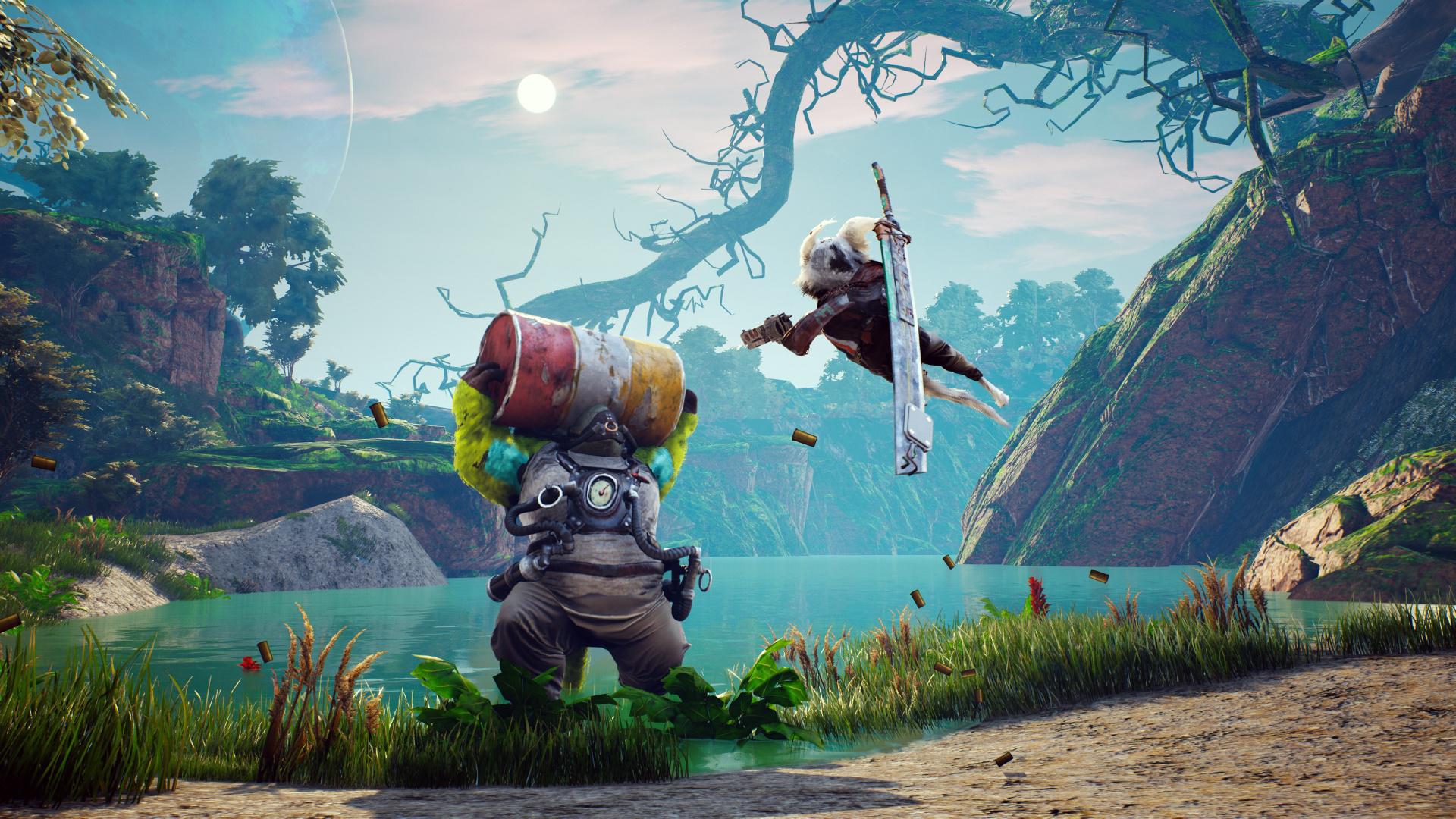 The Third-Person Narration of everything happening from an unnamed British voiceover only makes the juxtaposition of the themes all the more jarring. This omniscient voice not only gives the backstory to just about every nook, cranny, and character you encounter, but he also translates the dialogue you get from all “Banjo-Kazooie” gibberish spoken out of the NPCs, and it didn’t take long before all of this mess left feeling completely disconnected from the world. Aside from the presentation of its world-building, there’s one other major factor that contributed to the dissonance I had with the universe of BioMutant—the significantly flawed design of the Open-World Map and Layout it takes place in.
The Third-Person Narration of everything happening from an unnamed British voiceover only makes the juxtaposition of the themes all the more jarring. This omniscient voice not only gives the backstory to just about every nook, cranny, and character you encounter, but he also translates the dialogue you get from all “Banjo-Kazooie” gibberish spoken out of the NPCs, and it didn’t take long before all of this mess left feeling completely disconnected from the world. Aside from the presentation of its world-building, there’s one other major factor that contributed to the dissonance I had with the universe of BioMutant—the significantly flawed design of the Open-World Map and Layout it takes place in.
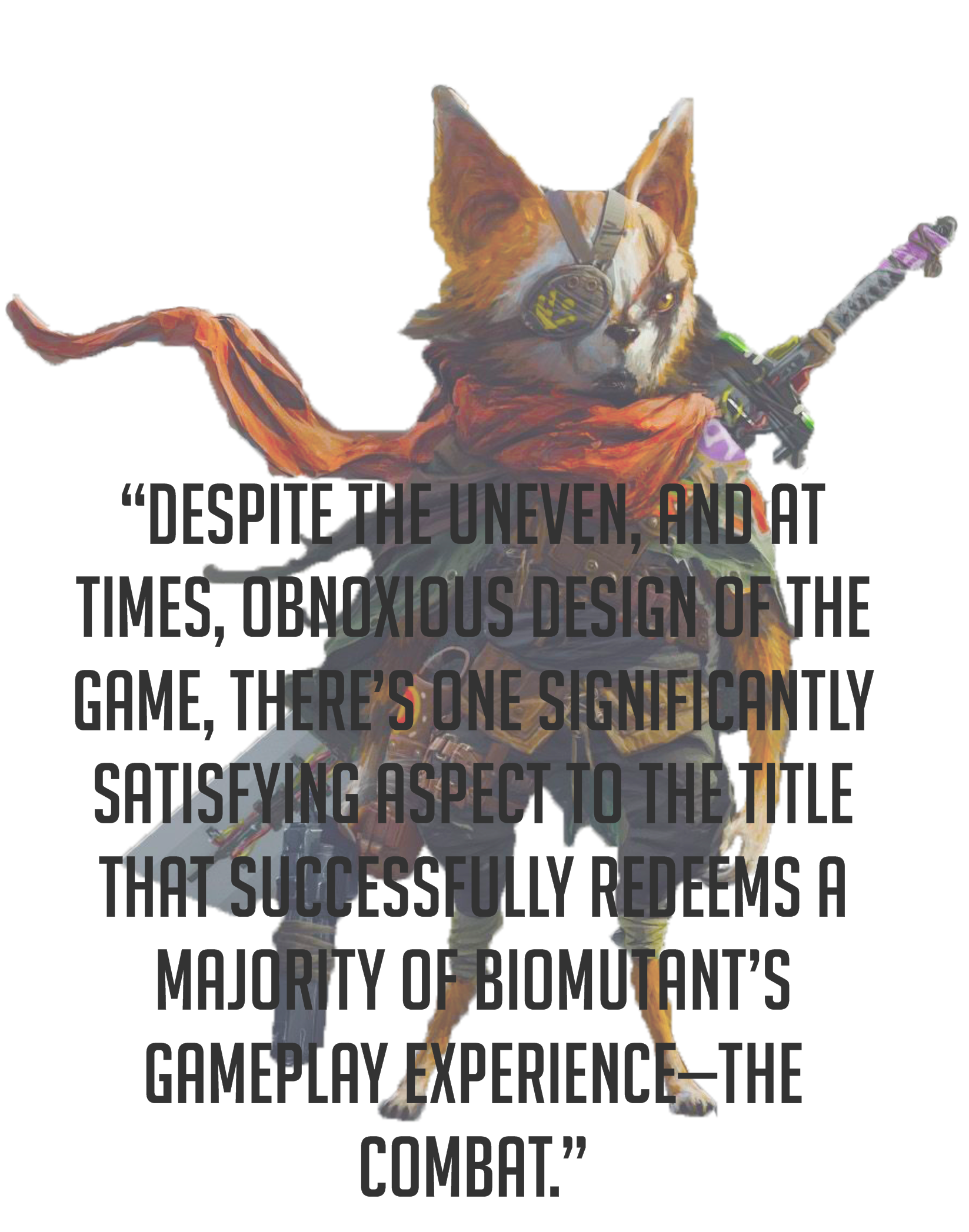 There are three key elements needed to make an engaging Open-World experience; offer a variety of movement options to give players agency over traversal, multiple points of interest for players to pursue outside of the main objective with a reasonable degree of freedom, and a competent waypoint system that makes the exercise of navigating the land intuitive and satisfying. Admittedly, meeting all three of these expectations is a lot easier said than done, but what makes BioMutant so frustrating is that it honestly fails to deliver on any one of these aspects.
There are three key elements needed to make an engaging Open-World experience; offer a variety of movement options to give players agency over traversal, multiple points of interest for players to pursue outside of the main objective with a reasonable degree of freedom, and a competent waypoint system that makes the exercise of navigating the land intuitive and satisfying. Admittedly, meeting all three of these expectations is a lot easier said than done, but what makes BioMutant so frustrating is that it honestly fails to deliver on any one of these aspects.
Trekking through the game’s hilly pastures isn’t something that’s necessarily slow as more as it is tedious. There are so many canyons and mountains to plot through, and hardly any means to naturally ascend these obstacles outside of a stumpy double-jump that barely adds any extra height to your vault. Nearly all of the terrain is uneven, without no clear indication of what slope is too steep to tread on, so climbing through these areas leads to a lot of trial and error where success is derived more out of exploitation than ingenuity—the whole exercise of it all is just plain no fun. If you decide to move around these mountains or canyons then you’ll take a less active, yet far more time-consuming route unless you strike it lucky with a throughway path, or a random bridge—which again falls right back to having a bad time instead of a good one. One of the most insipid mechanics is the mount system you can earn early on by completing quests where you’re taming wild beasts or commissioning vehicles to pilot, mainly because of how poorly explained the surprisingly involved process of using them actually is.
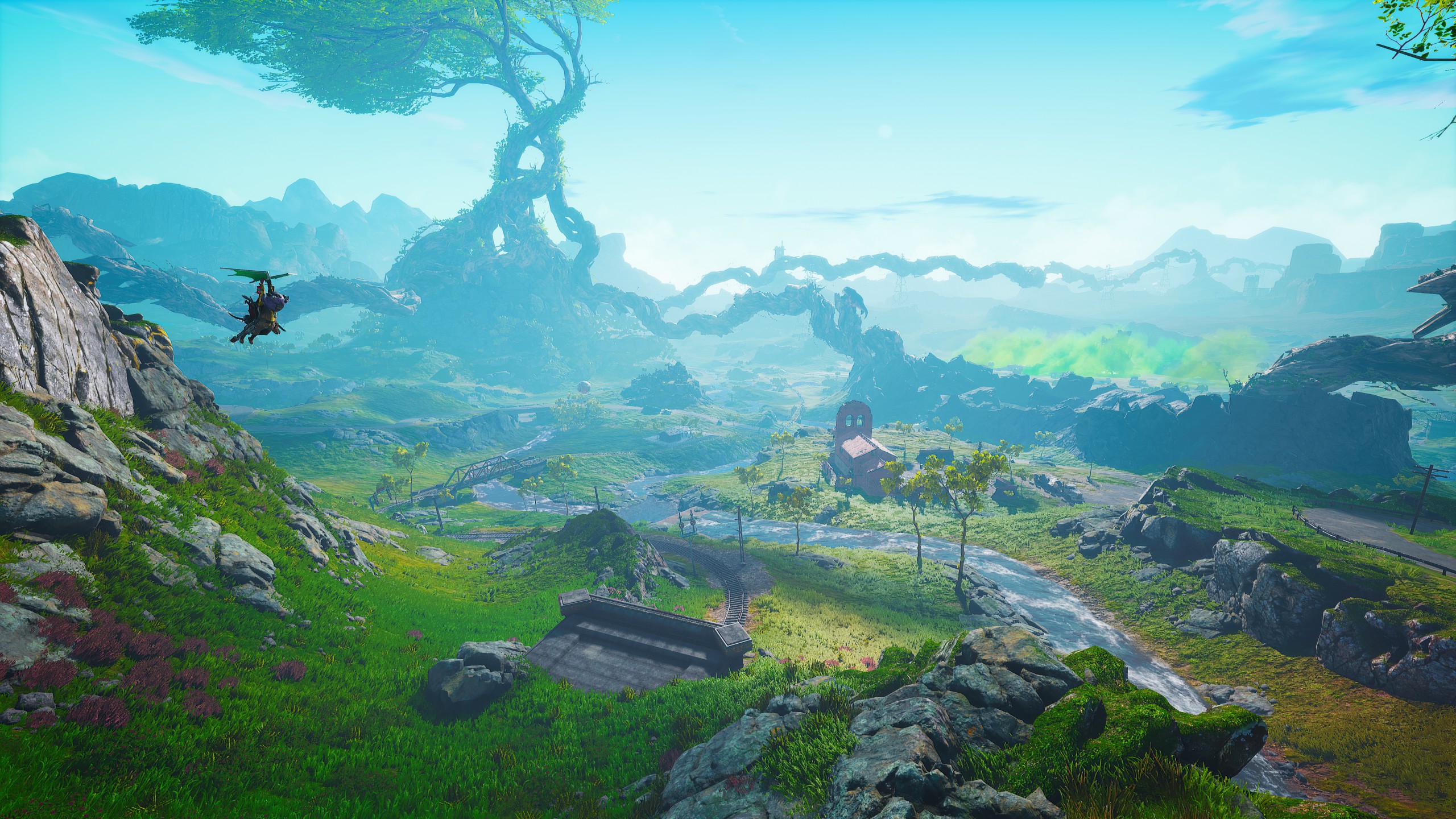
Keeping up the theme of unintuitive design, earning, and deploying the various riding gear you come across is an insipid process that’s more exhausting than it is rewarding. Each mount will have multiple fetch-quest objectives associated with them that range anywhere from a boss fight, to a gathering mission, and some are even buried under an entire dungeon course that’s rife with rooms and goons to work through, with each set of missions becoming more tedious than the last. Once you acquire the vehicle, the opportunity to use it becomes a whole new hassle in and of itself. The context-sensitivity of the mounts is wildly finicky, where players will struggle to call their mounts like a Townie trying to hail a Taxi in New York, often requiring multiple tried to summon your ride against an onslaught of error messages. A majority of them also suffer from the lack of traction necessary to cover a majority of the off-beaten path in BioMutant’s world, offering little to wildly NO advantage over your stock means of simply roughing the trek on foot.
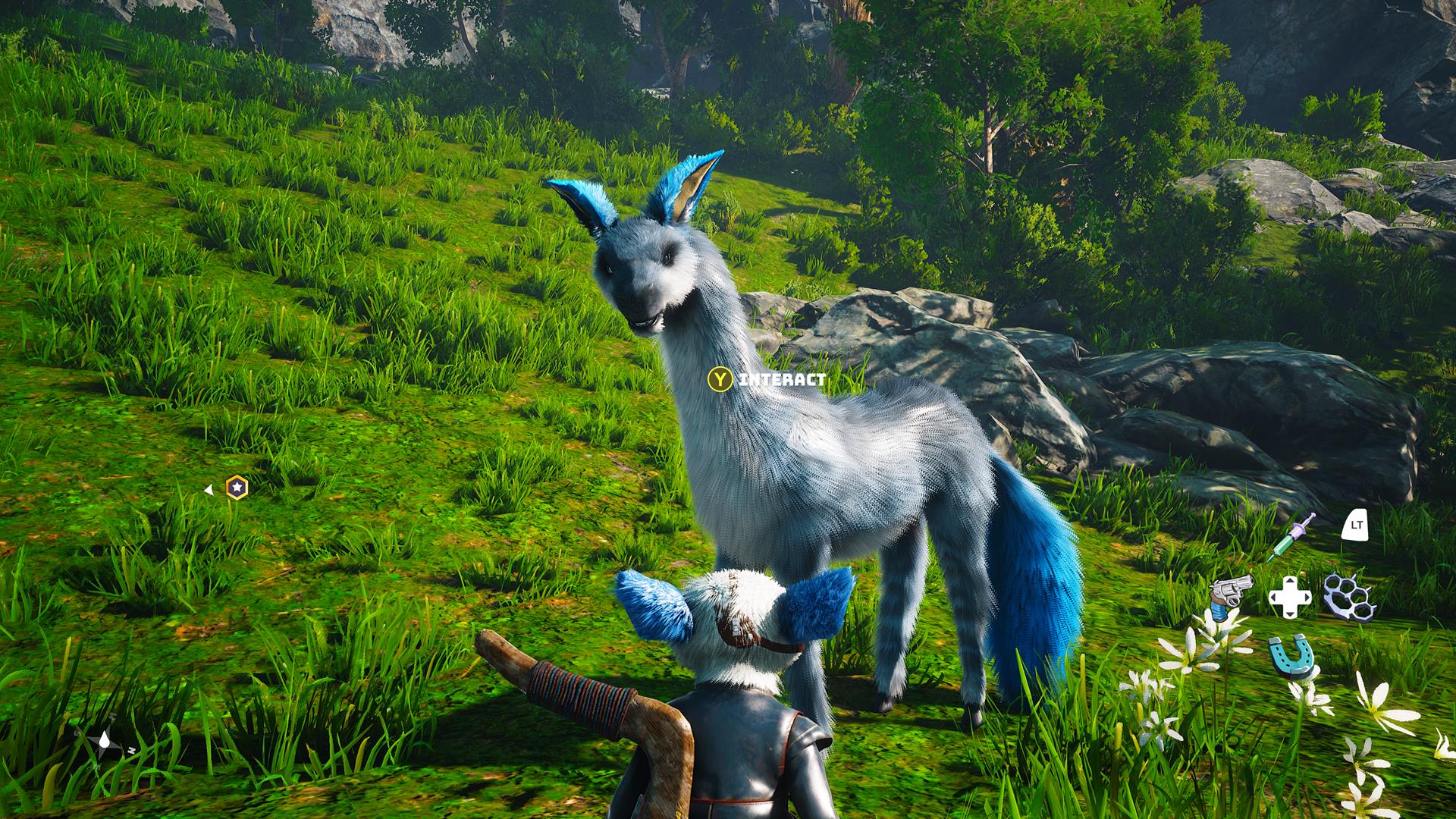 Another big issue is the Waypoint system that guides you to your objectives as it too struggles to communicate what route is the most optimal against the variable heights and descents of the Map’s mountainous terrain. I can’t tell you how many times I circled a destination where the Waypoint told I was right on top of it, only to discover that the actual location was underground in some cave, becoming all the more frustrating to uncover after what seemed like eons of endless circling around the supposed objective landmark. Over time, wary players will be able to pick up on the hacky placement design, as 80% of the objective locations seem to lay underground or in a valley, but then there’s the other 20% of the area that's obscured inside of random architecture with a needlessly cryptic entrance. I really can’t stress just how annoying it is to travel through BioMutant’s Open-World.
Another big issue is the Waypoint system that guides you to your objectives as it too struggles to communicate what route is the most optimal against the variable heights and descents of the Map’s mountainous terrain. I can’t tell you how many times I circled a destination where the Waypoint told I was right on top of it, only to discover that the actual location was underground in some cave, becoming all the more frustrating to uncover after what seemed like eons of endless circling around the supposed objective landmark. Over time, wary players will be able to pick up on the hacky placement design, as 80% of the objective locations seem to lay underground or in a valley, but then there’s the other 20% of the area that's obscured inside of random architecture with a needlessly cryptic entrance. I really can’t stress just how annoying it is to travel through BioMutant’s Open-World.
Despite the uneven, and at times, obnoxious design of the game, there’s one significantly satisfying aspect to the title that successfully redeems a majority of BioMutant’s gameplay experience—the combat.
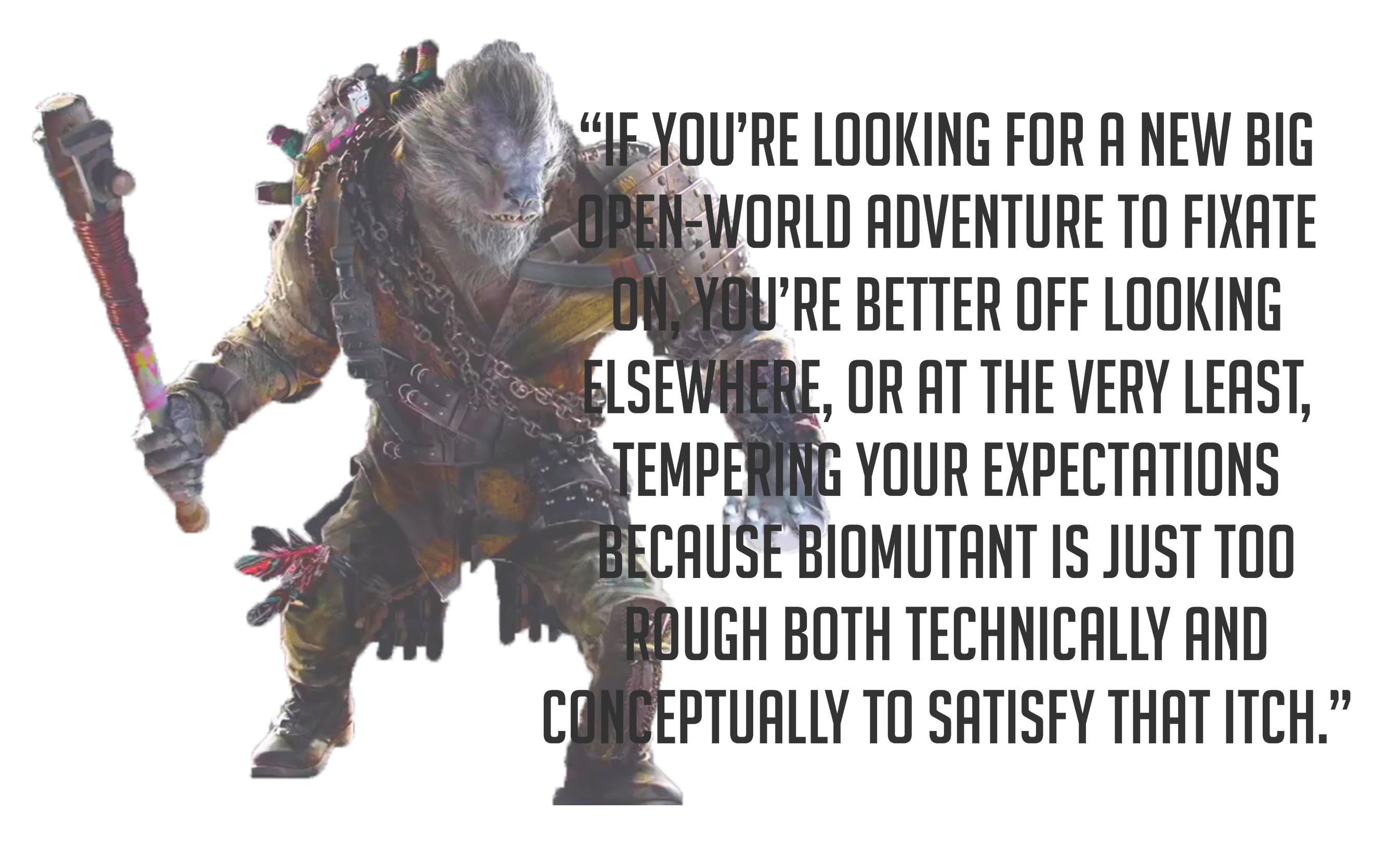 Players will have the option to fight enemies with direct melee attacks or ranged attacks with a large selection of weapons and firearms to choose from, each one capable of customizable upgrades for maximum damage output. The ebb and flow to the action aren’t as smooth as Arkham Knight or Shadows of Mordor, but it’s certainly close, thanks in large part to the responsive controls, and the intuitive defensive system of parrying and evasive dodges that players can execute seamlessly so long as the game isn’t run by the technical chugging that I covered earlier. In addition to these basic forms of offense, are additional actions you can use in the form of Psi-Op and Bio-Abilities; these special attacks or buffs can be assigned between four macros for dynamic use, all of them with varying degrees of usefulness depending on your preferred style of assault. I say varying degrees of usefulness because, with all honesty, there are just way too many abilities to parse through, and a sizable portion of them are more nuanced than they are practical. One of those abilities for example is the Ice Explosion skill, a technique where is a frozen glacier literally bursts out of your Critter’s palm at the ground, something that would ideally come in handy for situations that call for effective crowd control—the reality of its execution is way more disappointing. While the skill does damage all of the opponents crowding you, the impact does nothing to knock back any of your foes, eliminating any chance of setting some strategic distance between you and the scuffle should things get too hairy. The closest thing it does to crowd control is it freezes the zone of the floor it hit with a slippery surface that will disorient enemies into slipping about, which can be helpful or annoying depending on your position and the flow of combat at the time. Or how about the Levitate skill, an ability that only works when players are standing on a flat surface because using on anything else turns into a glitchy Yo-Yo exercise of your character rapidly between hovering and standing to a rather nauseous effect.
Players will have the option to fight enemies with direct melee attacks or ranged attacks with a large selection of weapons and firearms to choose from, each one capable of customizable upgrades for maximum damage output. The ebb and flow to the action aren’t as smooth as Arkham Knight or Shadows of Mordor, but it’s certainly close, thanks in large part to the responsive controls, and the intuitive defensive system of parrying and evasive dodges that players can execute seamlessly so long as the game isn’t run by the technical chugging that I covered earlier. In addition to these basic forms of offense, are additional actions you can use in the form of Psi-Op and Bio-Abilities; these special attacks or buffs can be assigned between four macros for dynamic use, all of them with varying degrees of usefulness depending on your preferred style of assault. I say varying degrees of usefulness because, with all honesty, there are just way too many abilities to parse through, and a sizable portion of them are more nuanced than they are practical. One of those abilities for example is the Ice Explosion skill, a technique where is a frozen glacier literally bursts out of your Critter’s palm at the ground, something that would ideally come in handy for situations that call for effective crowd control—the reality of its execution is way more disappointing. While the skill does damage all of the opponents crowding you, the impact does nothing to knock back any of your foes, eliminating any chance of setting some strategic distance between you and the scuffle should things get too hairy. The closest thing it does to crowd control is it freezes the zone of the floor it hit with a slippery surface that will disorient enemies into slipping about, which can be helpful or annoying depending on your position and the flow of combat at the time. Or how about the Levitate skill, an ability that only works when players are standing on a flat surface because using on anything else turns into a glitchy Yo-Yo exercise of your character rapidly between hovering and standing to a rather nauseous effect.
Aside from these hiccups, there are still some powers that are worth building towards, effectively enhancing your Fuzzy Cipher of a protagonist for the better, and thankfully, the core character-building mechanics is another one of BioMutant’s more competent fundamentals.
Building the best upright furry will circle around five major aspects of character development; Vitality, Strength, Intelligence, Dexterity, and Agility—and amazingly, each one of them works to play multiple roles in the quest to somewhat help with the tedium of exploring the flawed world. Increasing your Intelligence stat for example will not only affect the various types of equipment you can wear but the difficulty of the various logic puzzles you’ll encounter, with the amount of moves you’re allowed increasing the higher your intelligence rank is. Player’s will have an HP bar and Stamina bar, the latter being drained from a number of different actions like simple evasion, or special abilities, and the energy cost to each of these actions is also determined by the value of your core stats like Intelligence or Agility. Earning experience through battle encounters will only get you so far, as a lot of the growth is gated behind the many quests and missions you can take on—complete with a morality system, a dynamic that’s almost as frivolous as it is half-baked.
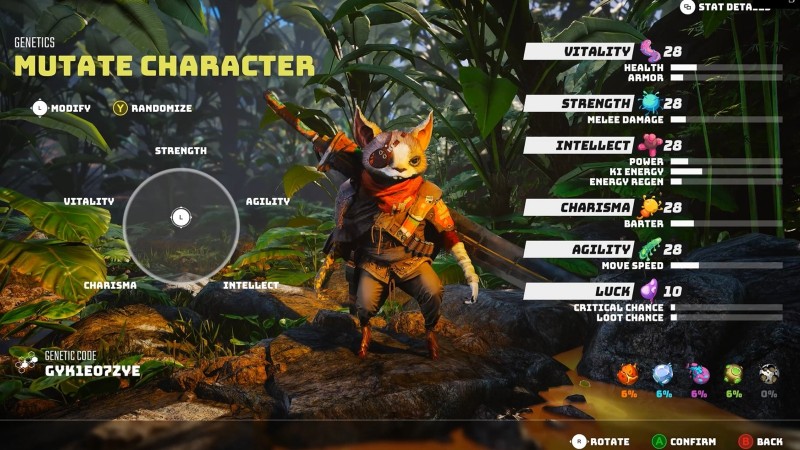
What makes the Morality system feel so hollow in the scope of everything is how it’s directed almost entirely by dialogue choices. Nearly every conversation you have with the mutated denizens of the campaign touch upon your Moral Compass with surveys of impressions, and hypotheticals against a very binary metric of being either a hero or an asshole with very little in between. The only other choices you can make are the few Tribe encounters hinge on making peace or war, and these random animal encounters where you’re able to catch a helpless critter and decide whether or not you’re going to pet it or tastelessly maim it for purely sadistic reasons—which uhhh, super sucks for a lot of reasons… Contextually, the effect that the morality of your character has on the overall narrative acts as nothing more than garnish to the plot direction, with its significance more centered towards exclusive abilities each side of the aisle offers from one another, adding even more bloat to that mechanic.
All in all, the few instances where the Story, Gameplay, and Technical Performance actually clicked and didn’t crash was the most enjoyment I got out of BioMutant, but those moments were sorely few and far between. The game just feels sloppy and polished, mainly because there's just too much going on between its plot elements and the gameplay dynamics and no harmony to their collective function. It’s almost as if Experiment 101 originally wanted to make two very different types of games and simply settled at the one, throwing every idea they had at the wall, and hoping they would just stick.
If you’re looking for a new big Open-World adventure to fixate on, you’re better off looking elsewhere, or at the very least, tempering your expectations because BioMutant is just too rough both technically and conceptually to satisfy that itch.





 GeorgieBoysAXE
GeorgieBoysAXE




